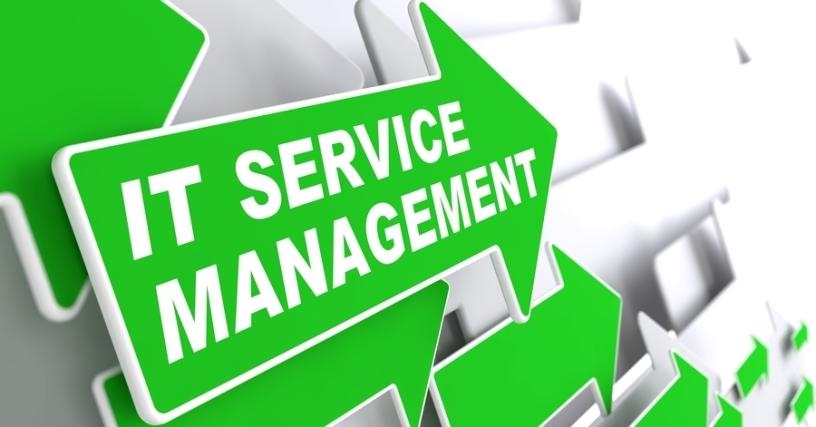
The CFO of every company has a dream: that the financials they work with are accurate and current, because their finance managers are using the best possible tools in the best possible way. But why is Jenny in accounts using the Excel sheet she set up herself to run P&L reports (spreadsheets that no-one else knows how to use)? Why is Sizwe using a Gmail account to distribute financial reports (because the corporate e-mail system only allows 2MB attachments).
You can repeat these scenarios for every executive in every business: are their teams able to work efficiently, consistently, professionally, using the technology tools the company provides?
If only there was a way to ensure the systems the IT department builds and operates always support business processes, always maximise productivity, are always oriented towards driving business growth.
Thankfully, IT service management (ITSM) solves these challenges. ITSM is a set of strategies, methodologies and reference designs to deploy information technology so that they deliver the right services to the right people, designed in a way that the users prefer to use them.
This is the key to good ITSM: that the IT department has a relentless focus on deploying its tech in a way that helps colleagues in other parts of the business when it's needed, and is invisible when it's not.
IT services must support core processes, maximise existing investments and be a key component of delivering on the business strategy. An ITSM strategy therefore moves IT from being systems-centric to services-centric, where it facilitates business change, transformation and growth.
Adopting cutting-edge tech, reducing costs and ensuring good governance are some of the many good reasons to adopt an ITSM strategy, but it is fundamentally designed to help align IT systems to what the business, not the IT department, needs.
ITSM aligns IT to business objectives by prioritising the needs of the knowledge workers, the managers and the executives. It is after all these people, not IT processes, that build a company. However, it is often the department head who shouts the loudest that gets the lion's share of funding, neglecting much more valuable initiatives which deliver real revenue.
To take the emotion out of these fights over priority, the business can work within an ITSM framework to evaluate the business case for a new service. These can be tested against business requirements, overall business strategy and how it would be executed on by an IT steering committee drawn from around the business. This group would look at projects having the biggest impact on risk, cost and revenue. IT does not "own" this steering committee, but is involved to advise on the impact of the proposed business cases on the existing infrastructure.
A world without ITSM
Imagine your salesperson goes to see a client to close the deal. While sitting right there in the client's office, they open their laptop, connect via 3G, fire up the quoting tool and enter the details for the project, submitting with a digital signature. They shake hands, and go for a celebratory lunch. In the background, the tool pulled the client billing information from the customer database and the contract schedule from the product catalogue, generating a work order for a service delivery manager to start the installation process.
Each of these process steps require a system that automates a task. Behind the scenes there's desktop support for the internal staff, federated login across network domain and Active Directory to securely reach the internal systems from outside, the CRM system, process management systems and more.

If any one of these components breaks, or is changed, without reference to the business process it enables, the business is negatively affected. Delivering, supporting, scaling and upgrading any one of these components in isolation of an ITSM strategy that serves the business objectives, will result in IT services being the bottleneck rather than the enabler.
Reaching out to an ITSM expert will help you turn IT from a cost centre into a strategic asset, from a reactive department that grudgingly gives the business what it wants into a proactive team giving it what it needs in its entirety.
Key pillars of ITSM
* Service strategy: What services do the business need; what processes need to be enabled; what assets needs to be realised; who are the stakeholders and what are their specific needs; what budgets are in play; what capacity planning is needed.
* Service design: What needs to be built or adapted to meet the strategy in assets, architecture and technical resources; what suppliers need to be found; how are security and risk requirements met.
* Service transition: What needs to be done to enable the transition from old to new ways of doing things. Some of this is change management to protect the business while things are in flux, as the business must still meet governance, legal, contractual and regulatory requirements. While transitioning from old to new, there must be scope to adapt the plan to meet the actual needs of the business as they are surfaced.
* Service operation: Incident and helpdesk management, problem resolution and systems management.
* Continual service improvement: Identifying gaps, enhancing processes, training users.
In many, even most, cases, the business already has many of the ingredients of a solid ITSM strategy. Often the tools are there, the systems are deployed, the processes are in use.
Delivering the real value of an ITSM strategy cost-effectively is best done in partnership with an experienced ITSM strategy provider. Evolv Networks has the expertise and the hands-on experience to identify where there is existing value, where new processes or systems need to be developed, and how these can be pulled together for its clients within a clearly articulated strategy, according to a detailed plan, to ensure IT service management helps IT deliver real value to the business it serves.
Share
Evolv Networks
Take your business from good to great: Bridge the gap between IT and business needs.
Our top priority is to find the balance between new enterprise tools to power productivity and weeding out redundant communication and collaboration tools used throughout your business, focusing on these three pillars.
1. Risk
2. Cost
3. Revenue
Evolv Networks is your strategic IT service enabler. We implement, manage and support your revenue growth objectives by enabling you to bridge the gap between IT and business needs. The gap which is inhibiting your success.
You will suffer less disruption and loss of productive hours, reduce cost and increase revenue plus improve customer relations.
With careful maturity testing and entrenching of new technology in our own environment, we ensure the enabling solutions we supply are tried and tested and business-ready.
Gerhard Conradie, a certified MCSE (Microsoft Certified Systems Engineer, NT4/2000) and CNE (Certified Novell Engineer, Netware 5), is MD of the Cape Town-based IT business managed solutions provider Evolv Networks.
Editorial contacts